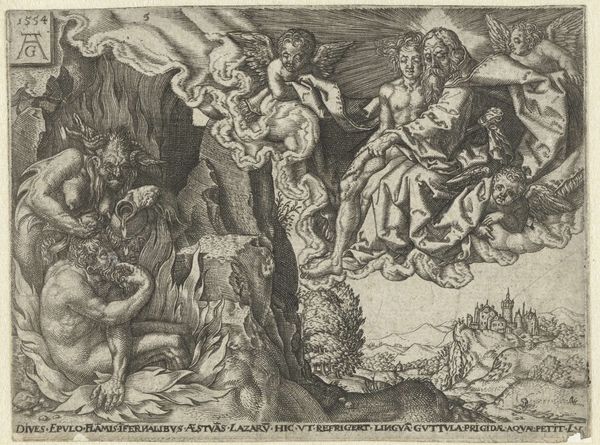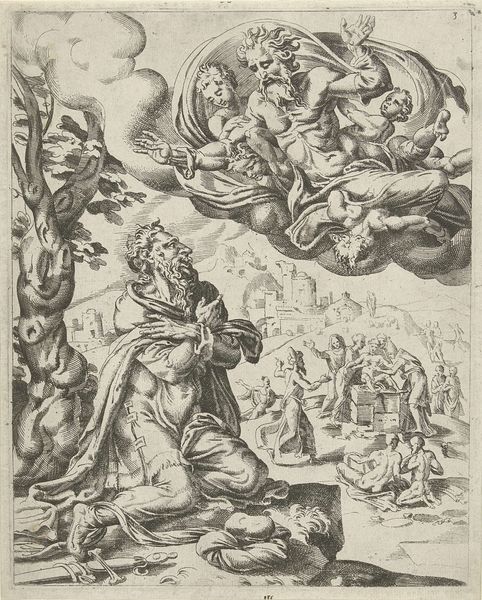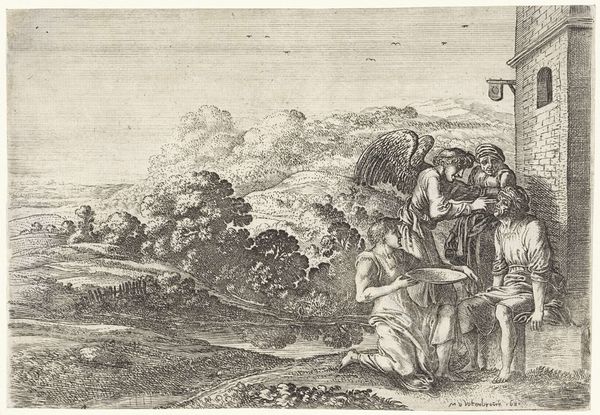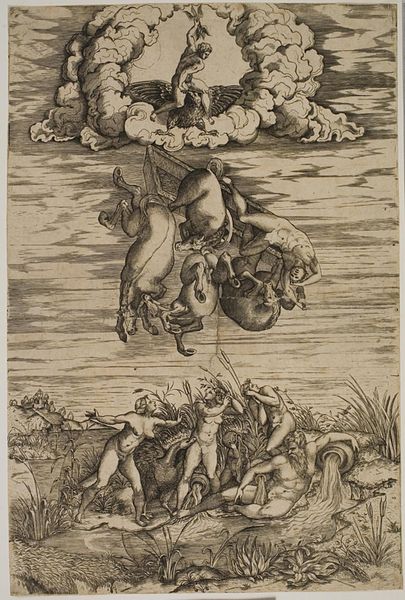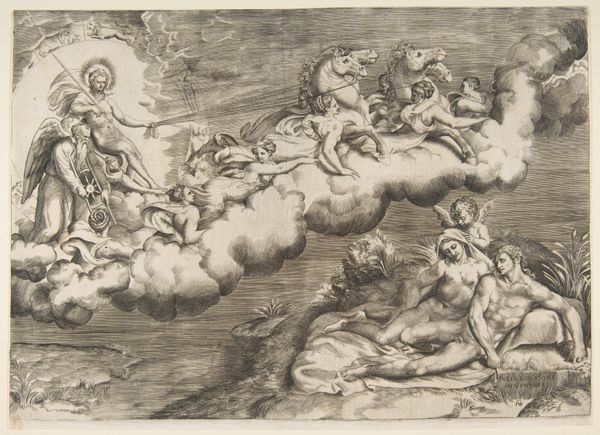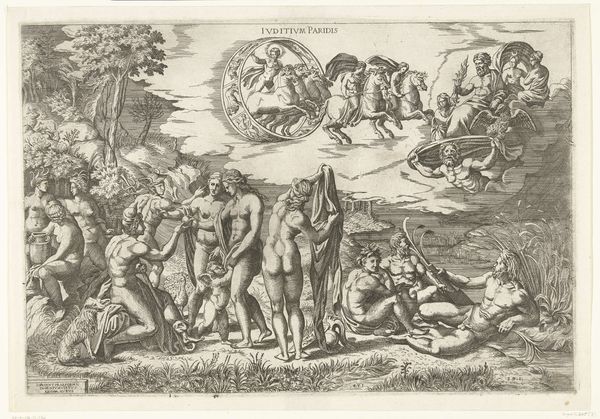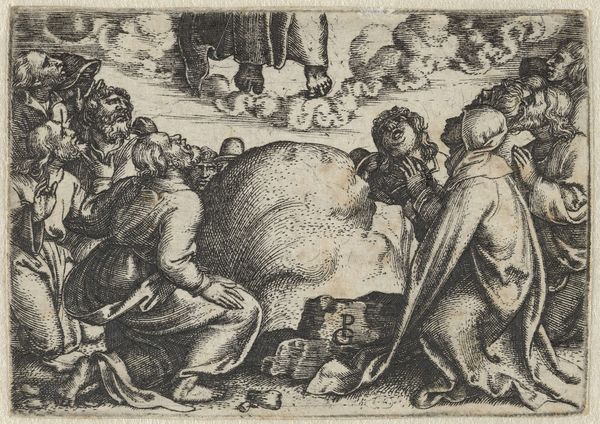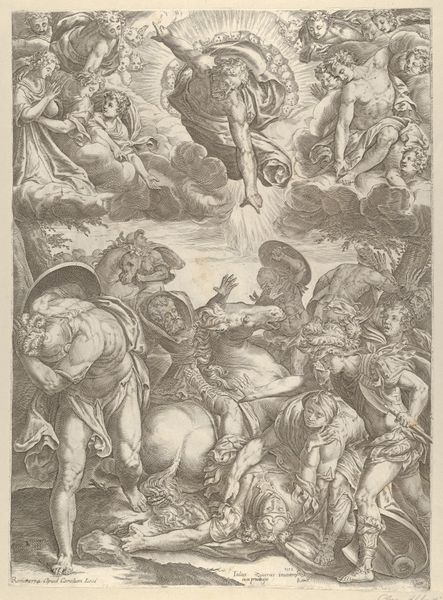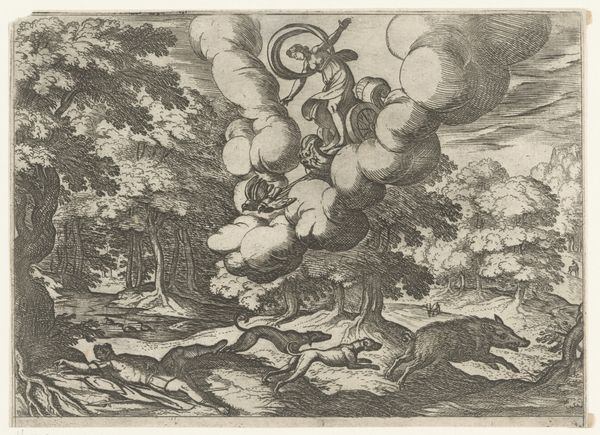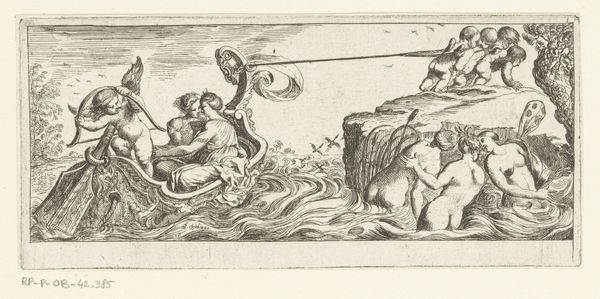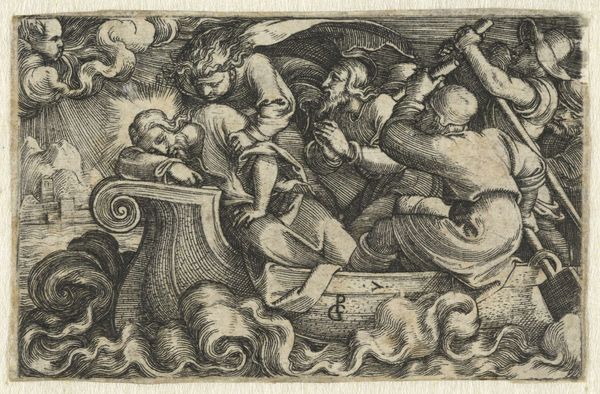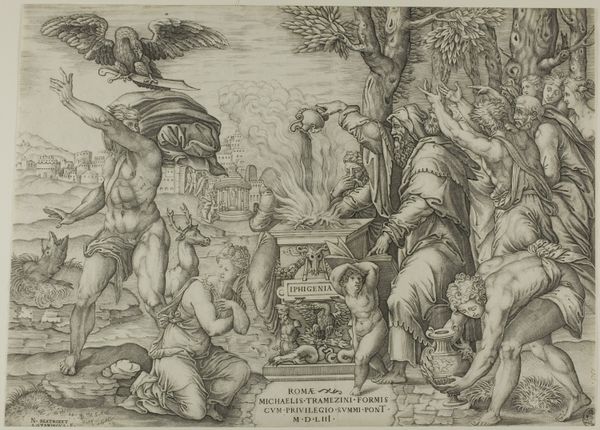
print, engraving
#
toned paper
#
light pencil work
#
allegory
# print
#
pen sketch
#
pencil sketch
#
figuration
#
11_renaissance
#
personal sketchbook
#
pen-ink sketch
#
pen work
#
sketchbook drawing
#
history-painting
#
northern-renaissance
#
sketchbook art
#
engraving
#
pencil art
Dimensions: height 61 mm, width 85 mm
Copyright: Rijks Museum: Open Domain
Editor: This is Georg Pencz's engraving, "Rich Man in Hell and Lazarus in Heaven with Abraham," created between 1542 and 1543. It’s striking how the composition divides the space, with heavenly figures on one side and a man engulfed in flames on the other. What’s your interpretation of this piece? Curator: Pencz's work reflects the intense religious and social anxieties of the Reformation era. Consider how the printing press, a relatively new technology, enabled the mass distribution of such imagery, directly impacting public perceptions of morality, wealth, and salvation. The clear visual distinction between Lazarus's blessed state and the rich man's suffering served as a powerful form of social commentary. What do you think this direct juxtaposition aimed to provoke in its original audience? Editor: It seems intended to make people question the social hierarchy and their own values. It’s like a visual sermon about the dangers of earthly riches. Curator: Precisely! And notice the artist's technique – the engraving. The medium itself lends to the work's didactic purpose, allowing for reproducible moral instruction across society. The very act of creating prints suggests a democratization of religious messaging. Think about how this image might function in different social settings—a wealthy merchant's home versus a public square. Editor: I hadn't considered the role of printmaking itself as part of the message. It makes me realize how carefully orchestrated the dissemination of such ideas would have been. Curator: It highlights the role of art not just as aesthetic experience but as a key player in social and religious debates. Editor: I’m starting to understand that it's about more than just the religious story; it's a product of a specific moment in history, shaping and being shaped by it. Curator: Exactly. By understanding the cultural context, we unlock richer meaning in what at first glance seems like a straightforward morality tale. Editor: Thanks, I definitely have a new perspective on the politics of imagery. Curator: Likewise. The layers of interpretation are always enriching to uncover together.
Comments
No comments
Be the first to comment and join the conversation on the ultimate creative platform.
